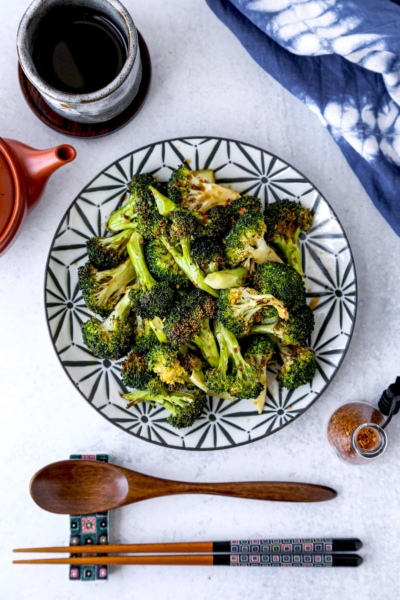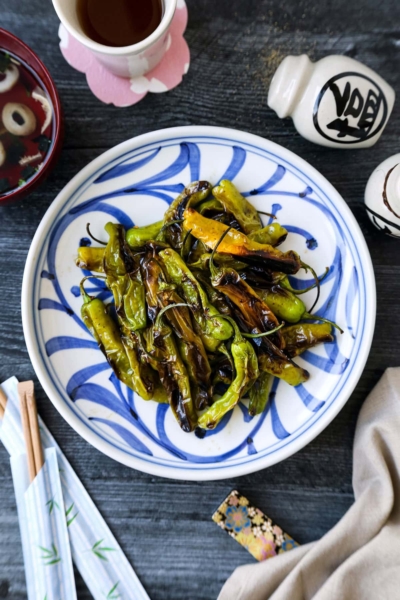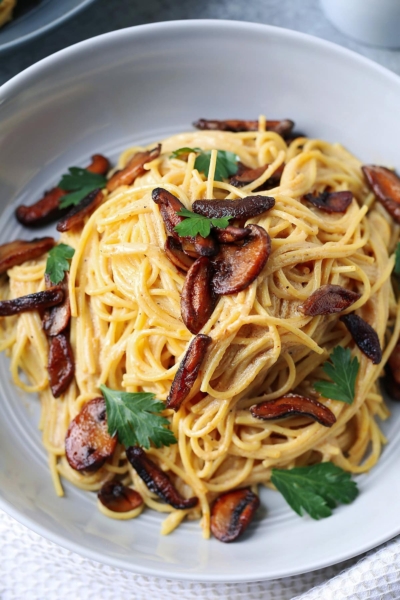While Japanese food is often associated with sushi, kobe beef, and milky pork based ramen, the cuisine also offers plenty of vegan options for those following a plant based diet. This roundup offers a variety of vegan dishes from ramen, to curry, to maki rolls, and some delicious desserts your entire family will love!
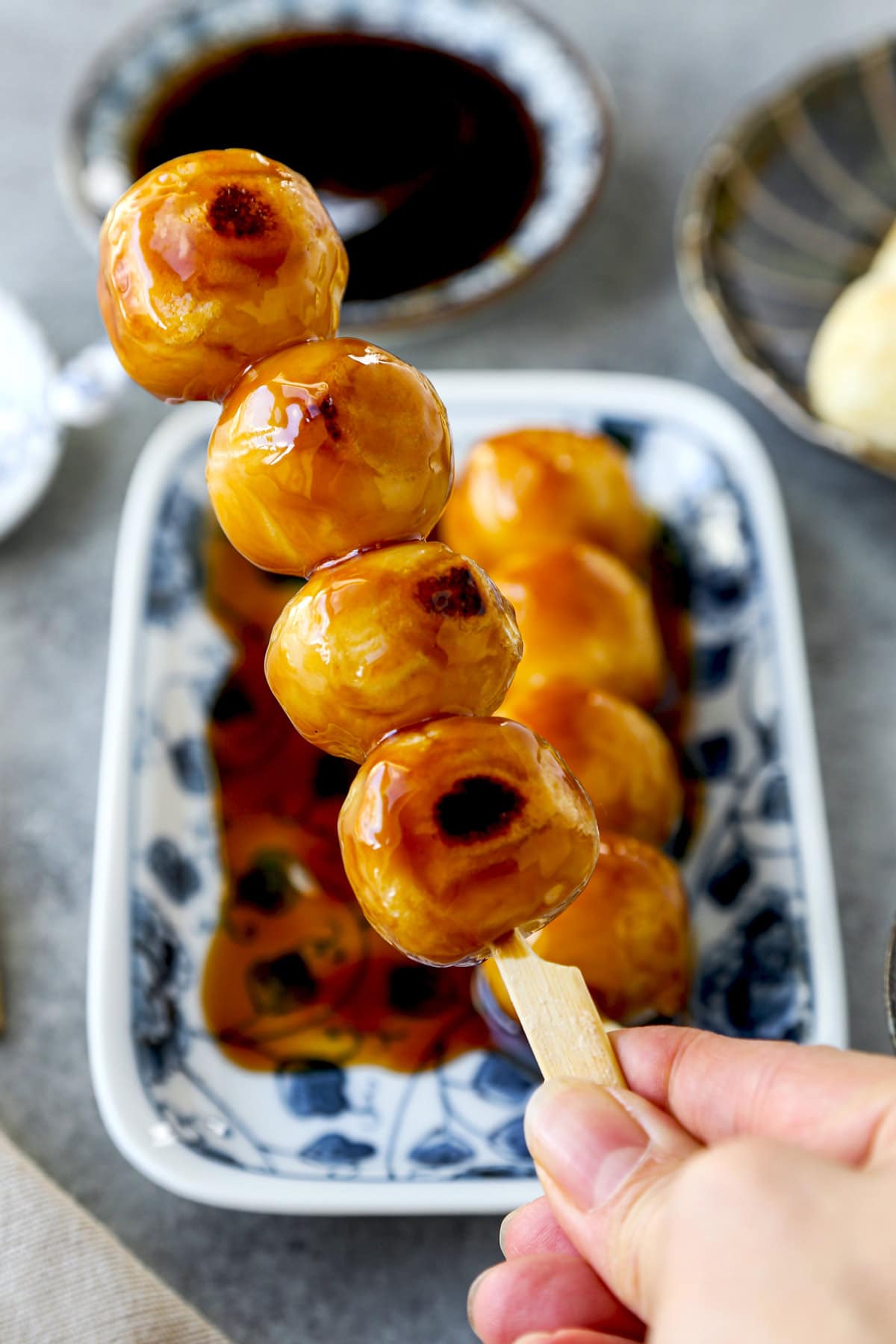
“How hard is it to eat vegan in Japan?” is a question that often comes to mind when someone who doesn’t eat meat is planning to go to Japan. That’s actually a great question since many Japanese dishes contain dashi which is made from bonito flakes, and some of their breads – including shokupan – include pork lard. To say that eating vegan in Japan is easy would be a lie, but the good news is that it’s getting easier!
With the plant based movement gaining traction in big cities like Tokyo and Osaka, more and more vegan restaurants have been popping up. There’s even a vegan ramen shop that just opened in the small town where my mother lives, which is surrounded by rice paddy fields! And since Ben and I quit eating red meat and poultry 5 years ago, it’s made our yearly trips to the land of the rising sun much more exciting!
When I come back from Japan I always feel inspired to recreate some of the dishes I tasted while I was there. Many of my recipes still include eggs and seafood but my goal is to eventually be able to give a vegan alternative to all the dishes I create. Some of the original dishes of this roundup are pescatarian or vegetarian, but I have added a vegan option to the recipe card. I hope you enjoy them as much as I do!
Miso Soup
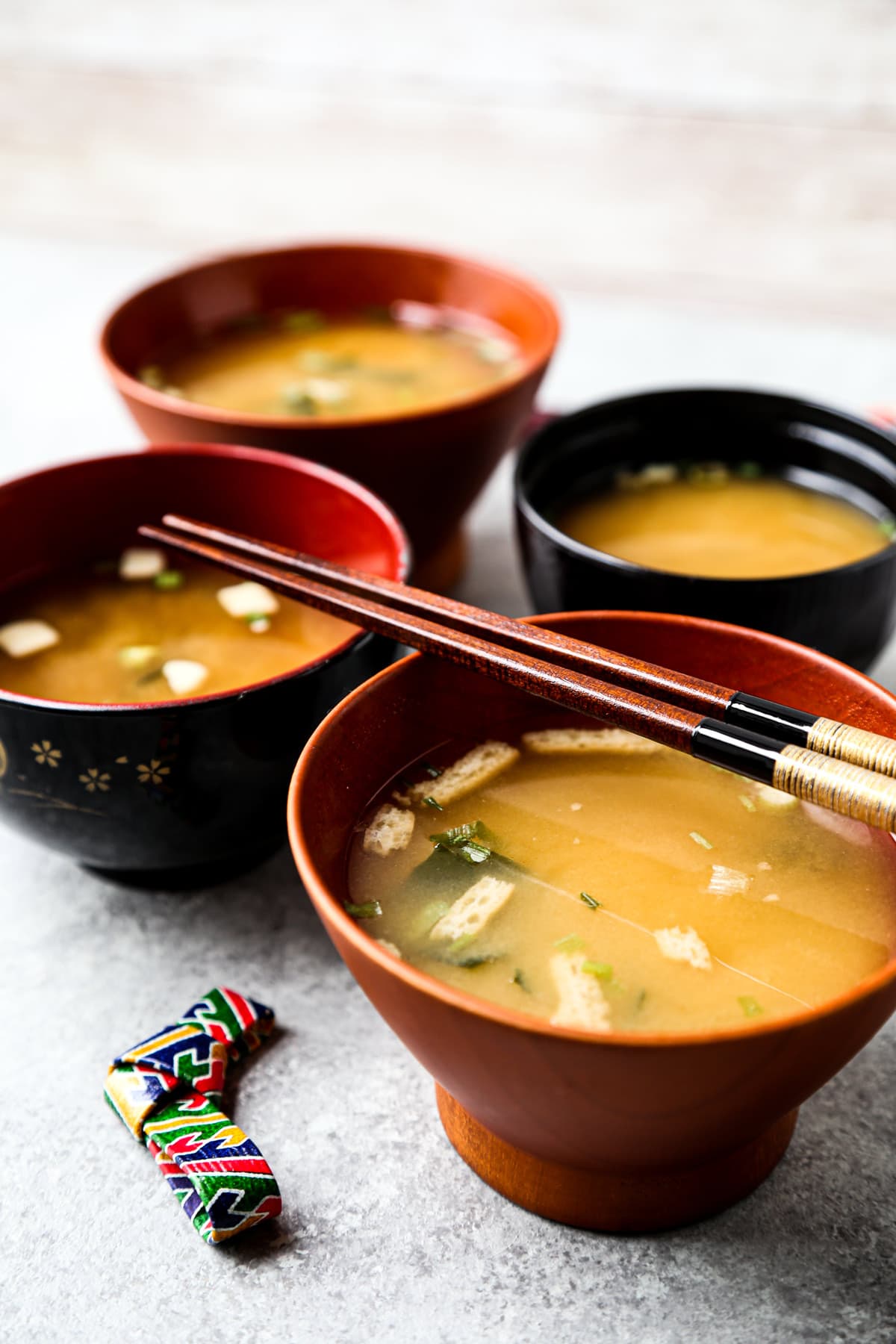
Miso soup, or misoshiru (味噌汁), is one of Japan’s most famous dishes. While a traditional miso soup is usually made using a mixture of dashi and miso paste, my mother’s recipe simply uses water and awase miso paste.
What makes her soup so delicious is the amami, which is Japanese for sweetness, coming from the onions slices that are boiled in the water until they are melt-in-your-mouth tender. The miso paste is added just before serving so the delicate flavors don’t get ruined by the rolling boil of the water. This is one my favorite miso soups of all time! GET THE RECIPE
Edamame with Soy and Sesame Sauce
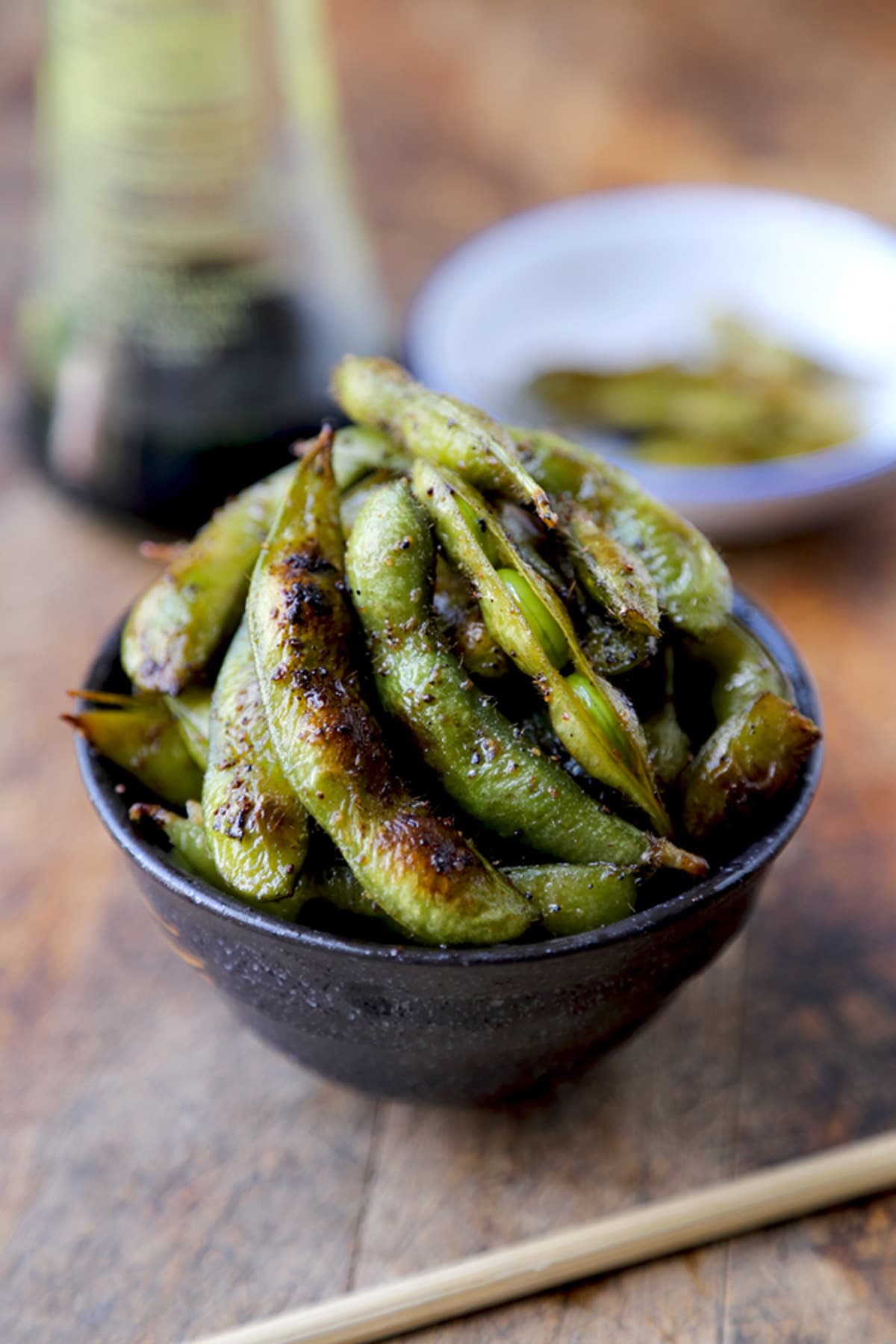
I’ve been making this snack for years now and never get tired of it! High in protein and low in fat, edamame is a delicious and wholesome snack for those following a vegan or vegetarian diet.
The pods are usually served seasoned with a little salt which is fine, but I prefer to make my mine a little more interesting by pan frying them with some soy sauce and sesame oil. This makes the sucking-on-the-pod process much more enjoyable and gives the beans a lovely nutty and earthy taste. GET THE RECIPE
Kaisou Salada (Seaweed Salad)
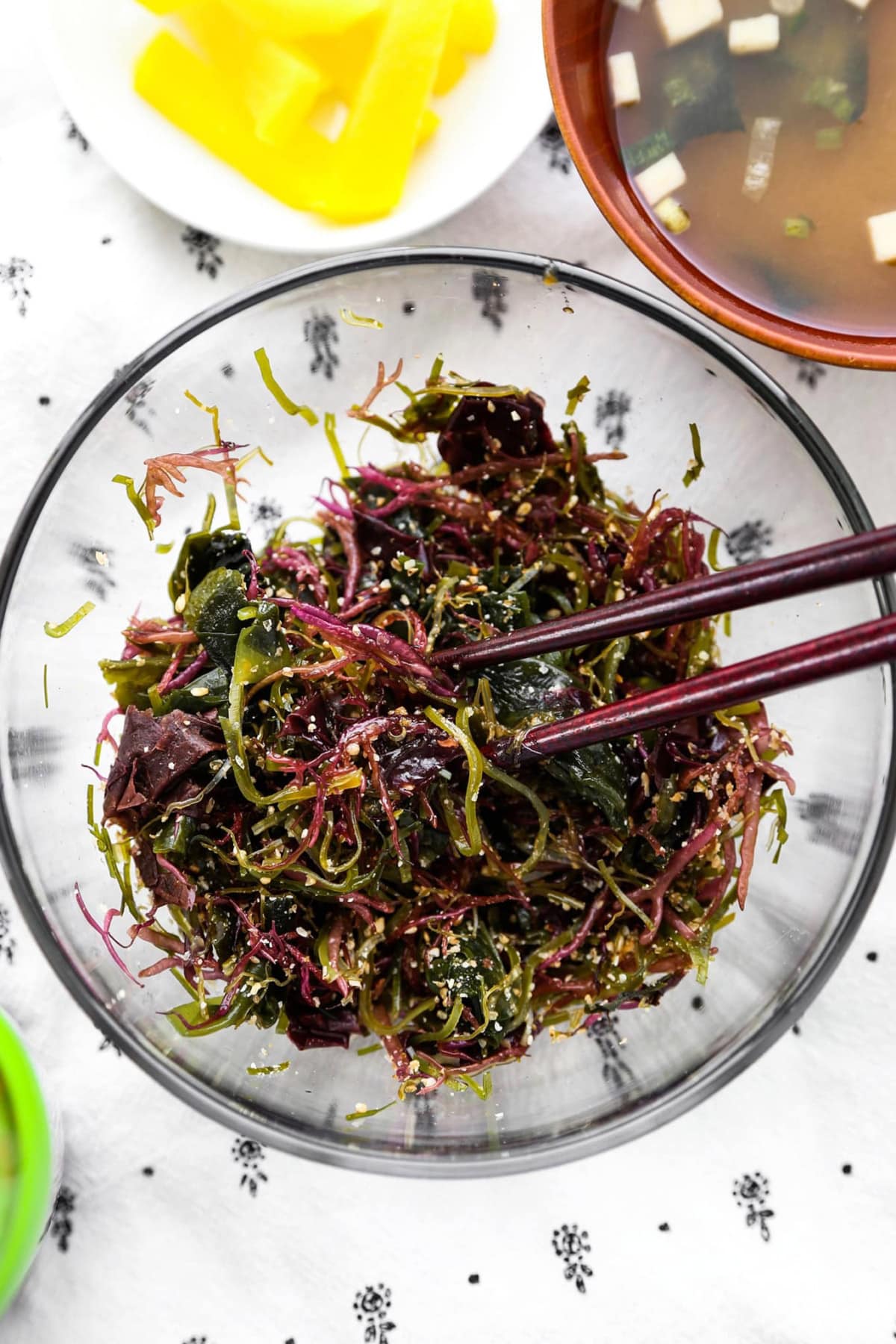
Let me begin by saying that you must love the texture of gelatinous seaweed in order to like this recipe, otherwise, skip to the next dish below! I personally love any dish that has seaweed in it – especially this one. I love the briny and mineral taste of algae mixed with the acidic and salty taste of the dressing.
It’s incredibly refreshing and cleansing and makes a great palate cleanser. GET THE RECIPE
Nasu Dengaku (Miso Glazed Eggplant)
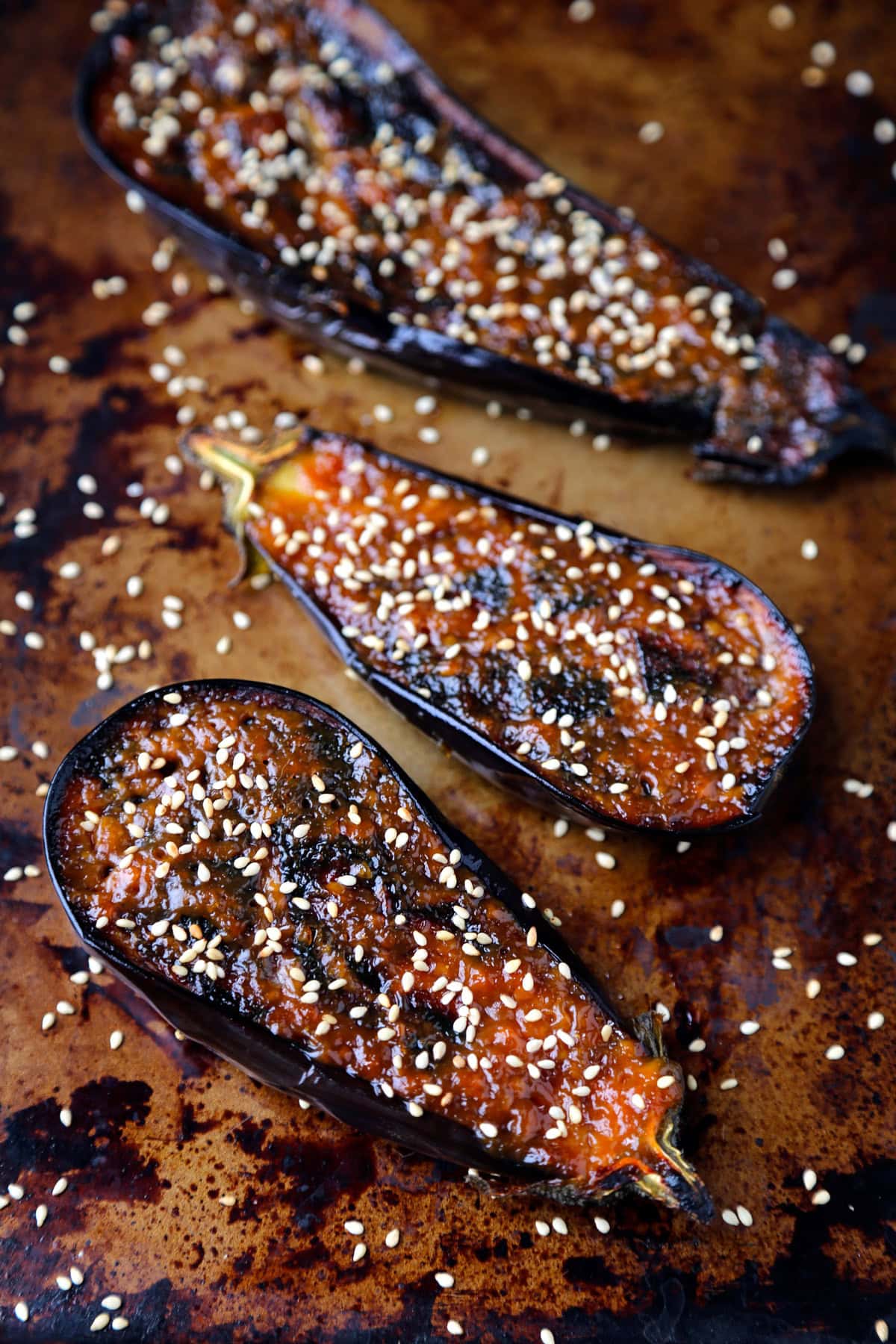
This eggplant recipe is the most popular recipe on my blog. It was published over eight years ago and never seems to lose steam!
What makes this dish stand out is in the way it’s prepared – the eggplant is sliced in half, scored, and pan fried until it gets a lovely char that adds a smoky element. The sweet and savory miso glaze is then brushed on top and broiled until it bubbles and caramelizes.
For many who have made this recipe, it’s become their favorite eggplant recipe of all time! GET THE RECIPE
Japanese Milk Bread (Shokupan)
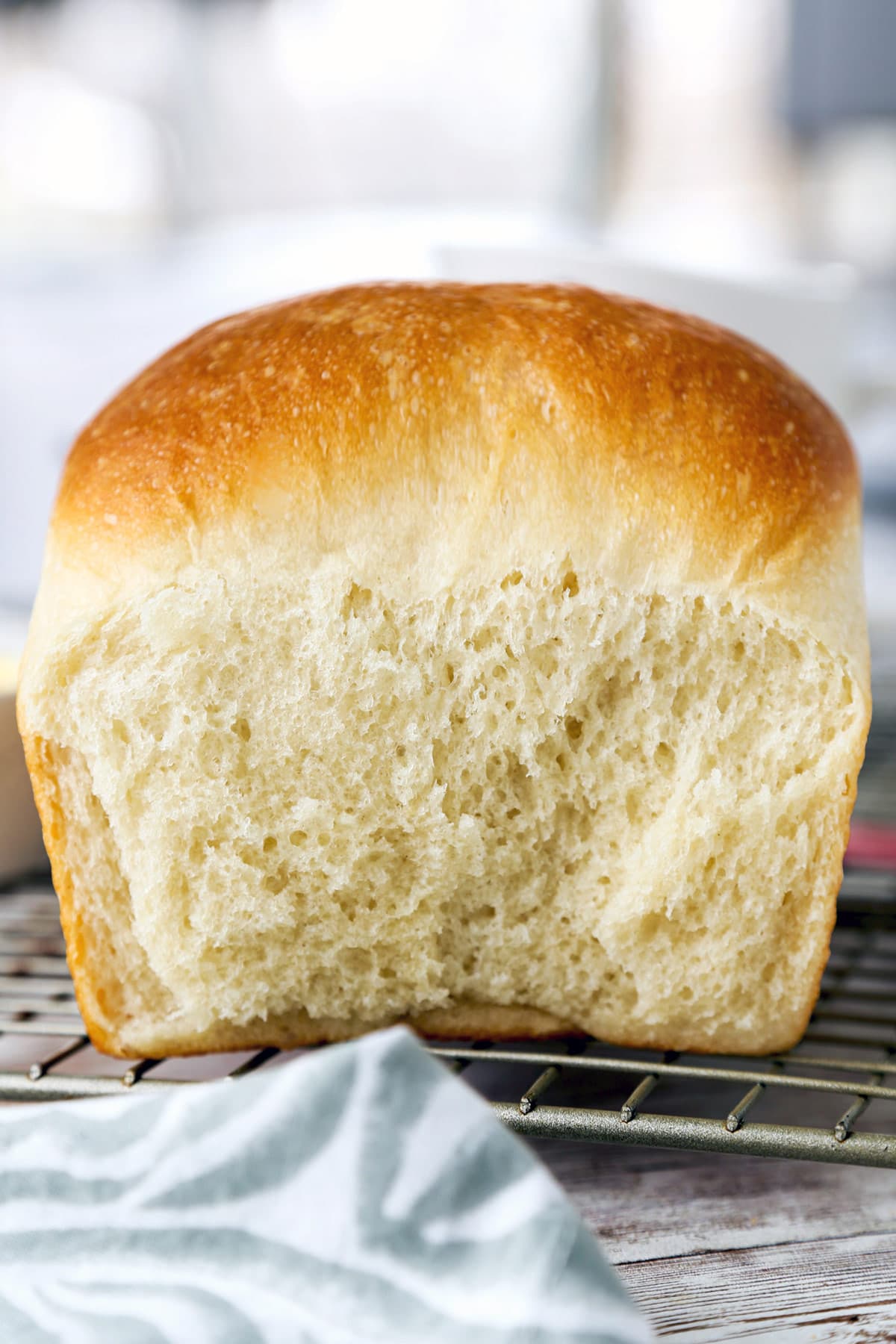
If you have never been to Japan you may not know about the insane talent Japanese people have for making exquisite breads. Japanese milk bread, or shokupan, is the first bread I had when I first set foot in Japan at the tender age of four.
I still remember falling head over heels in love with the airy fluffiness of the bread, asking my aunt to cut me a thicker slice every morning. I would put a pat of butter on my toast and watch it melt, sometimes tilting it from side to side so the butter would glide until it covered the entire surface.
As I got older and lived on my own in Tokyo, I discovered amazing Japanese bakeries hidden in the basements of department stores. That became something I looked forward to almost daily, as I made my way from bakery to bakery, trying breads with different toppings and flavors. It’s one of many things I miss about living in Japan.
The recipe I have for shokupan uses milk and an egg, but there are ingredient substitutions to make it vegan. And yes, I have made a vegan shokupan before and it was delicious – so you are in for a treat! GET THE RECIPE
Beyond Hambagu

As you know by now, I stopped eating red meat and poultry five years ago. And while it’s true that I don’t miss it very often, every once in a blue moon I do get a craving for a good hambagu! Thankfully, with vegan food becoming more and more popular, the market for meat alternatives has exploded and also gotten better.
Since coming up with this vegan hambagu recipe, it’s become a regular in our meal rotation. I served it to my mother in law who couldn’t even tell she was eating a vegan hamburger patty. So she made it for her friends who couldn’t tell either! I’m using Beyond Beef Plant Based Ground which has a texture almost identical to ground meat once it’s cooked. It’s served with a mushroom gravy that’s rich and full of umami. GET THE RECIPE
Vegan Ramen

When we think about vegan ramen, the first thing that comes to mind is miso ramen. But what’s interesting about miso ramen is that it’s often made with dashi and comes topped with sliced char siu pork.
This ramen recipe is nothing like it – it’s made with a mixture of tahini, vegan dashi, soy sauce, mirin, fresh ginger, and plenty of onions. What you get is a bowl of vegan ramen that’s nutty, savory, sweet, and salty. GET THE RECIPE
Vegan Tantanmen
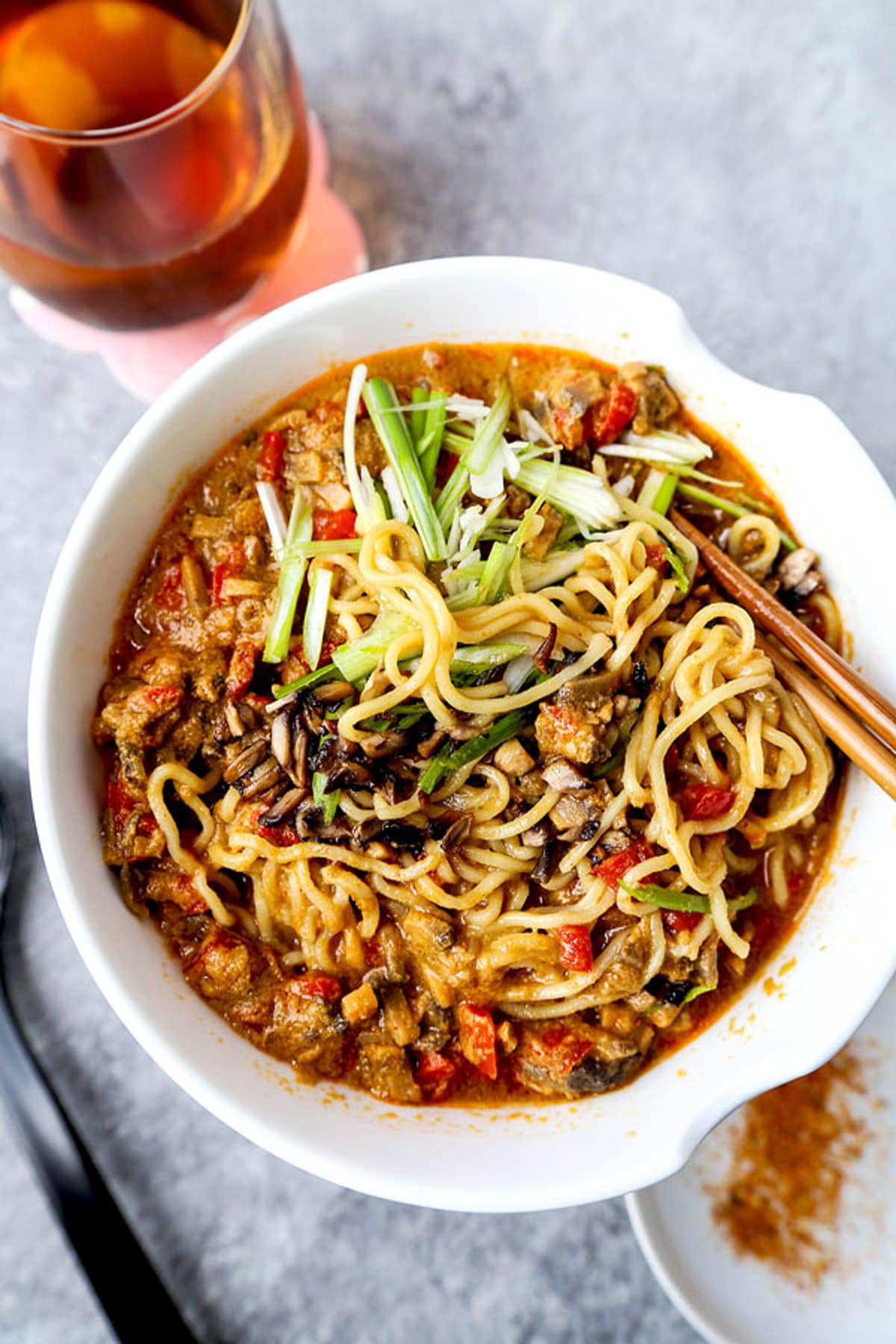
Tantanmen is the Japanese version of Chinese dan dan noodles which are noodles and ground meat tossed in a fiery sauce. The main difference between the two is that the Japanese version is barely spicy. That’s because Japanese food in general is quite mild compared to other cuisines such as Chinese, Korean, or Indian.
The use of spices isn’t very common in Japanese cooking which means that their palate isn’t trained to handle a lot of heat.
For this vegan tantanmen I’ve replaced ground meat with mushrooms, which give the dish lots of umami and earthiness. I’m using just a little gochujang to infuse some heat, but feel free to add more if you like it more fiery. GET THE RECIPE
Spaghetti Napolitan
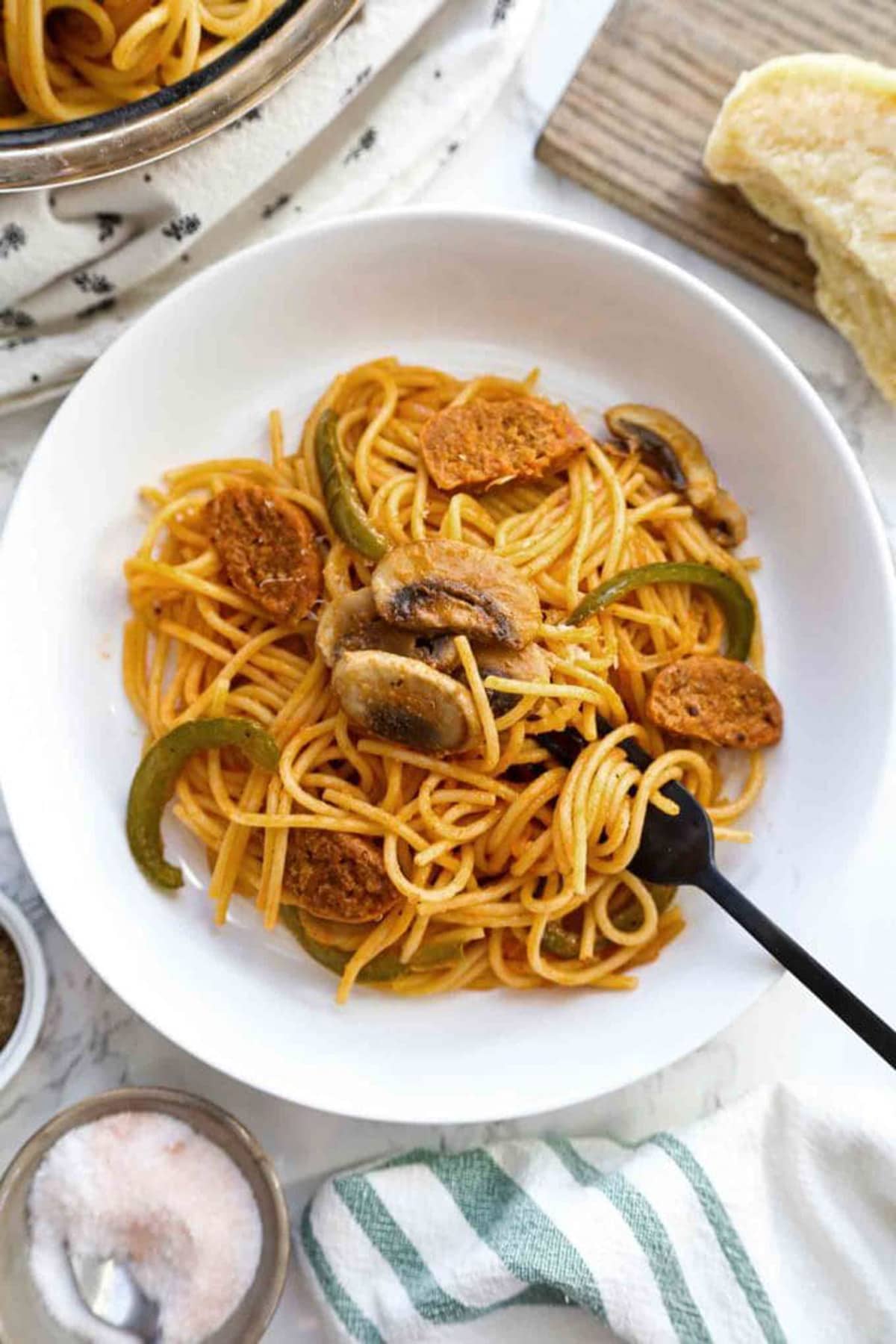
A childhood favorite of mine!
Spaghetti napolitan, also called neapolitan or naporitan, is a Japanese pasta dish that hails from the city of Yokohama (横浜). It’s a variation on the spaghetti with ketchup the US army used to eat during their occupation in Japan (1945-1952). It’s a simple pasta dish consisting of spaghetti tossed in ketchup and topped with sliced onions, bell peppers, bacon, and sausages.
The classic recipe is what you will find on the blog with some ingredient variations to make it vegan. You can use any type of meat alternative to make this dish but I personally love Beyond Sausage, the spicy Italian ones. They are so good and the texture is the closest to a real sausage. GET THE RECIPE
Maki Sushi
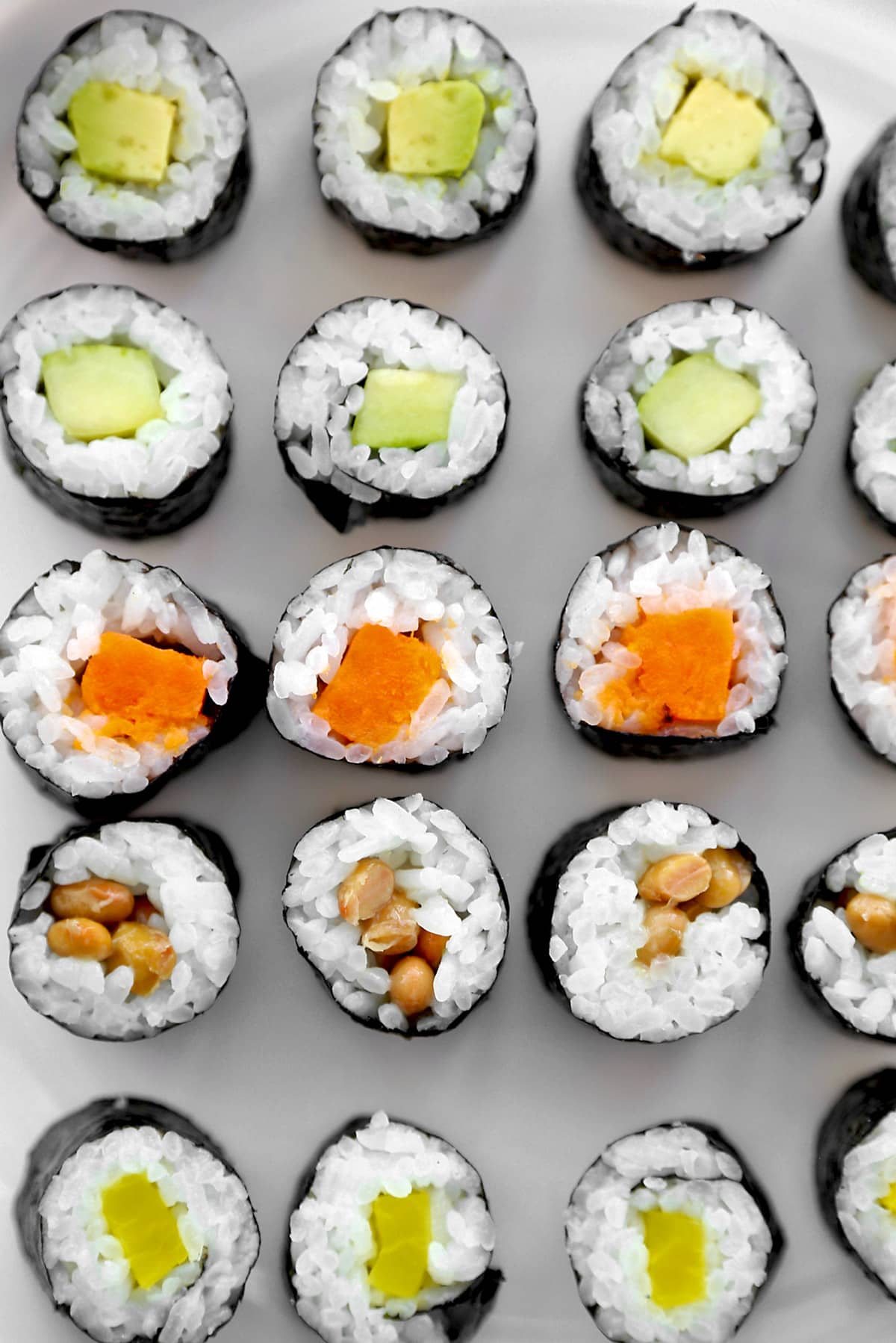
I couldn’t make a vegan Japanese food list without mentioning the obvious – maki sushi! It may be a cliche dish to recommend for a Japanese vegan meal, but who doesn’t love a good sushi roll.
In this post I share five vegan fillings you can use for your maki rolls – cucumber, sweet potato, takuan (yellow daikon pickles), natto, and avocado. GET THE RECIPE
Yaki Onigiri
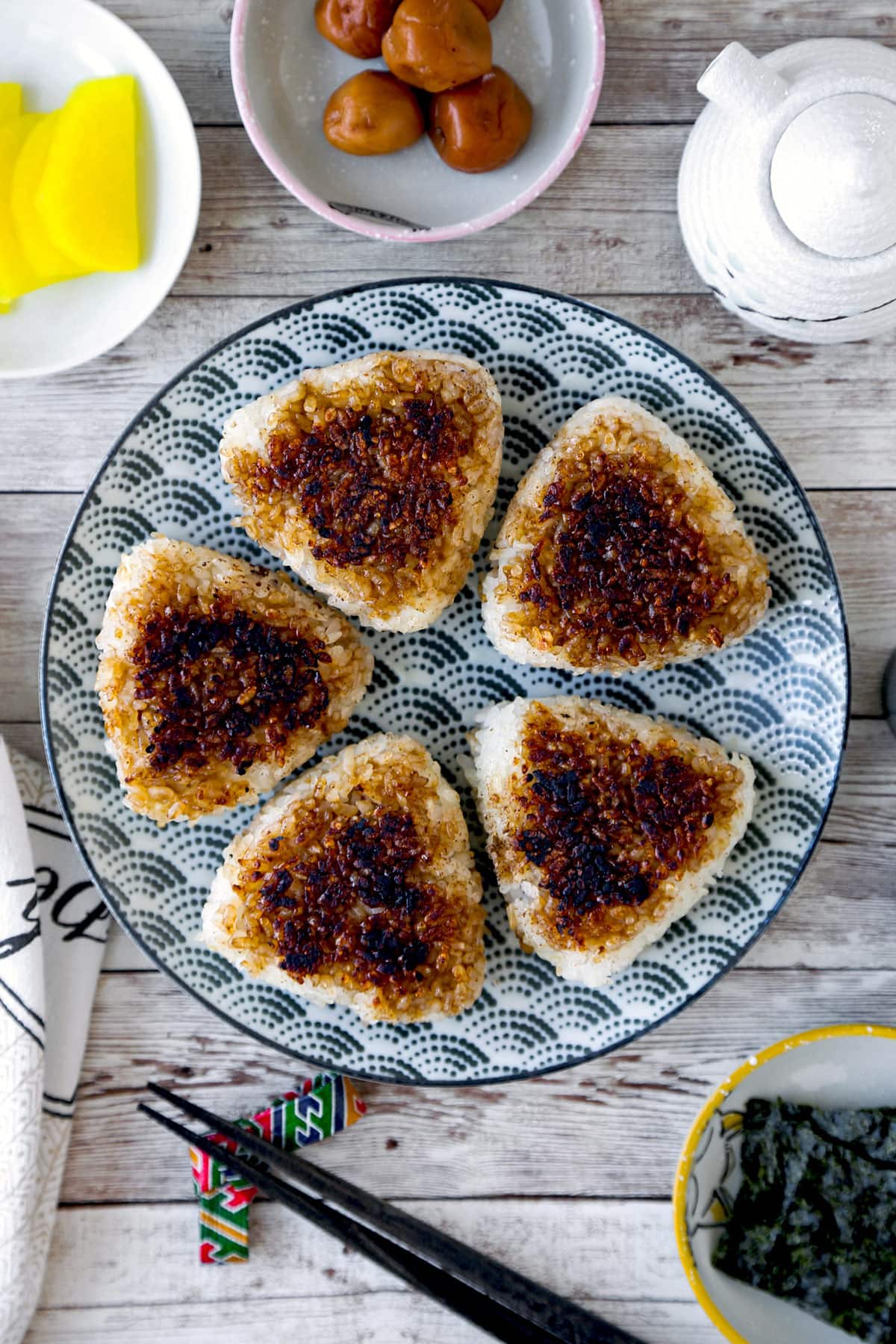
I love yaki onigiri! It’s sort of like an elevated version of a rice ball, a prettier version brushed with a sweet soy sauce that gives the onigiri a sweet and savory taste.
Traditionally, the onigiri is grilled over charcoal until the rice is crispy and served wrapped in nori. But since I don’t have a grill, I pan fried them instead – and they came out tasting just a good! GET THE RECIPE
Inarizushi
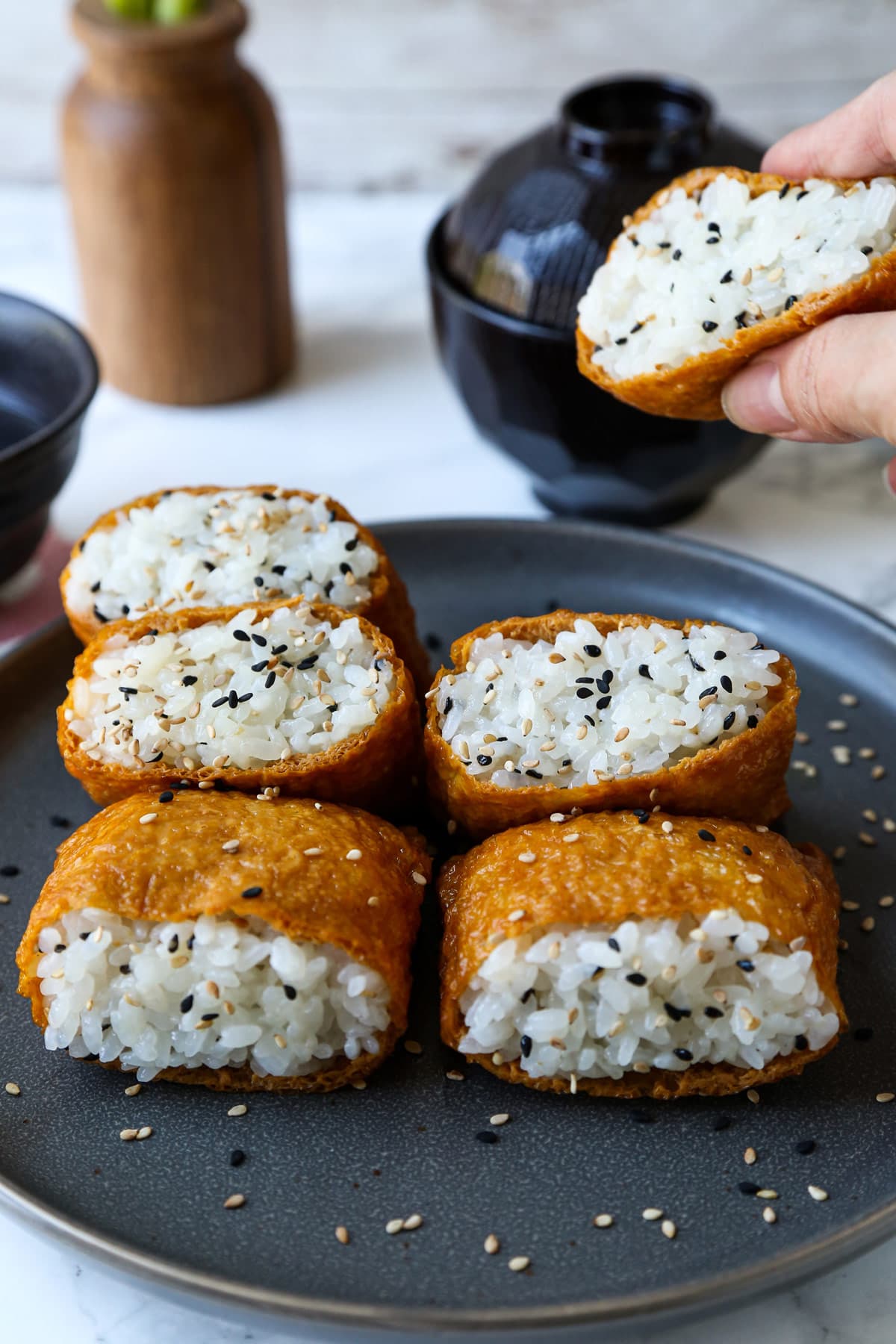
This is the last rice recipe in this roundup – and one that most, if not all, Japanese people love!
Inari sushi (いなり寿司) is a popular Japanese dish consisting of sushi rice stuffed in seasoned deep fried bean curd pockets (aburaage or inari age). It’s often served as a part of a family meal or is included in a nigiri sushi platter. Inari sushi has a very distinct flavor – it’s sweet, savory, acidic, and salty. It can be an acquired taste for those who didn’t grow up eating it.
You can make inari sushi pockets from scratch but I recommend buying them pre-made in a can. They are just as delicious! Some of them may contain dashi but the brand I’m using – Shirakiku Inari No Moto – is 100% vegan.
Japanese Vegetable Curry
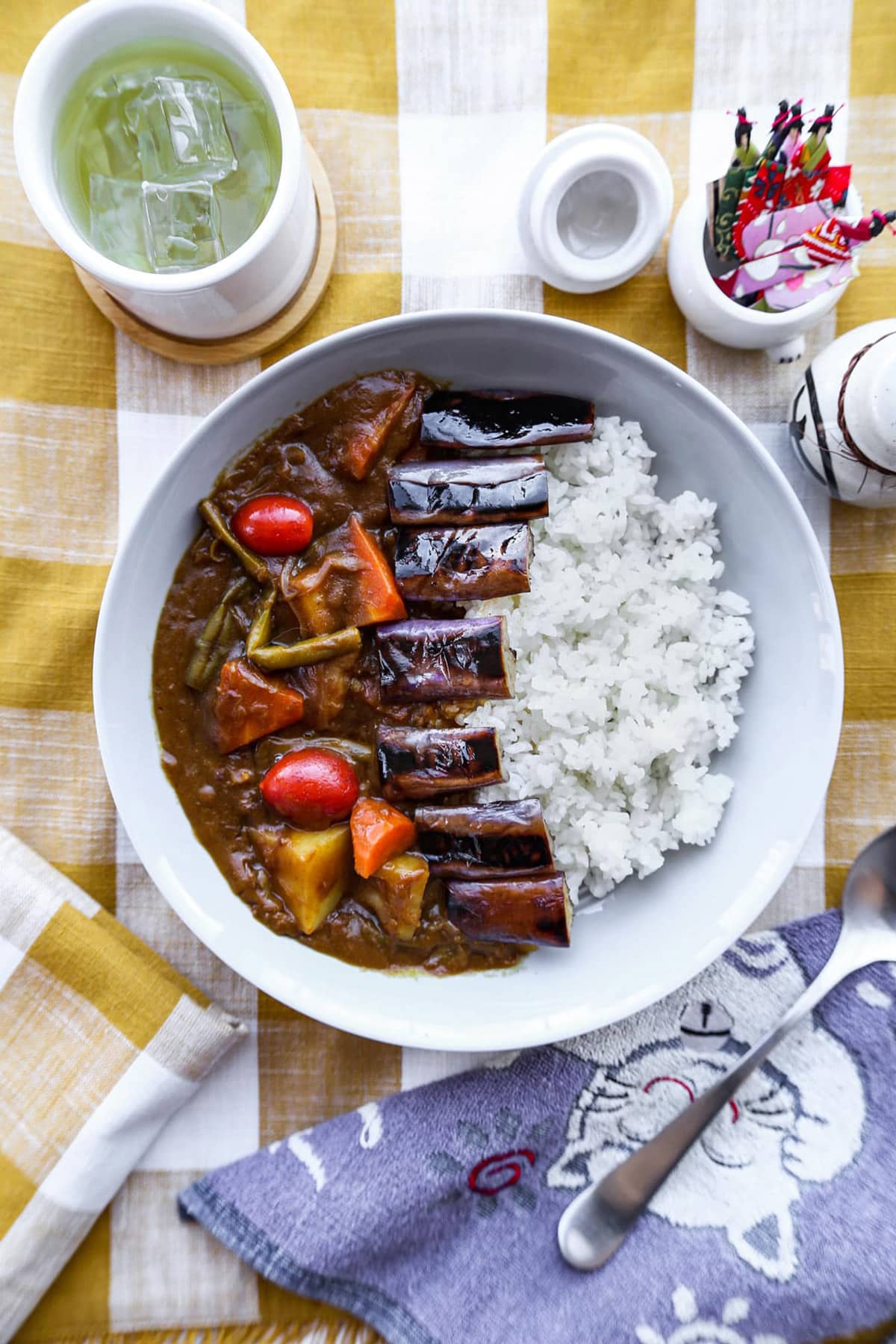
Yes you can make a Japanese curry, vegan! Brands like Java Curry (contains yeast) and S&B Golden Curry are both great options for those craving a plant based Japanese curry.
You don’t have to make Japanese curry from scratch, the pre-mix curry roux are absolutely delicious and something most households in Japan use. In fact, I don’t think I’ve ever met a single Japanese person who makes Japanese curry from scratch!
In this post I’m attempting to create something close to the curry I had at Coco Ichiban, a popular Japanese restaurant chain that specializes in Japanese curry. GET THE RECIPE
Mabo Nasu (Japanese Eggplant Stir Fry)

This is another delicious eggplant recipe you will love! Mabo nasu is a Japanese eggplant stir fry that’s a cross between Yú Xiāng (fish fry eggplant) and mapo tofu.
The original recipe contains ground meat but I’m using a mix of TVP (textured vegetable protein) and chopped bamboo shoots to mimic the texture. What you get is a tasty stir fry that’s gooey, sweet, nutty, savory, and slightly pungent.
You can serve it with any type of rice but I personally like classic short grain Japanese rice. GET THE RECIPE
Mitarashi Dango

Time for desserts!
If you like mochi you will love mitarashi dango. The texture is very similar to mochi but less stretchy. You get the delicate sweetness of the rice and the dango balls are coated in a sweet and savory soy glaze. It’s very easy to make!
It’s a traditional Japanese dessert (called wagashi) that can be found in convenience stores, supermarkets, yatais (street vendors), in the food court section of department stores, specialty stores, and on the menu of some traditional Japanese restaurants. GET THE RECIPE
Mochi
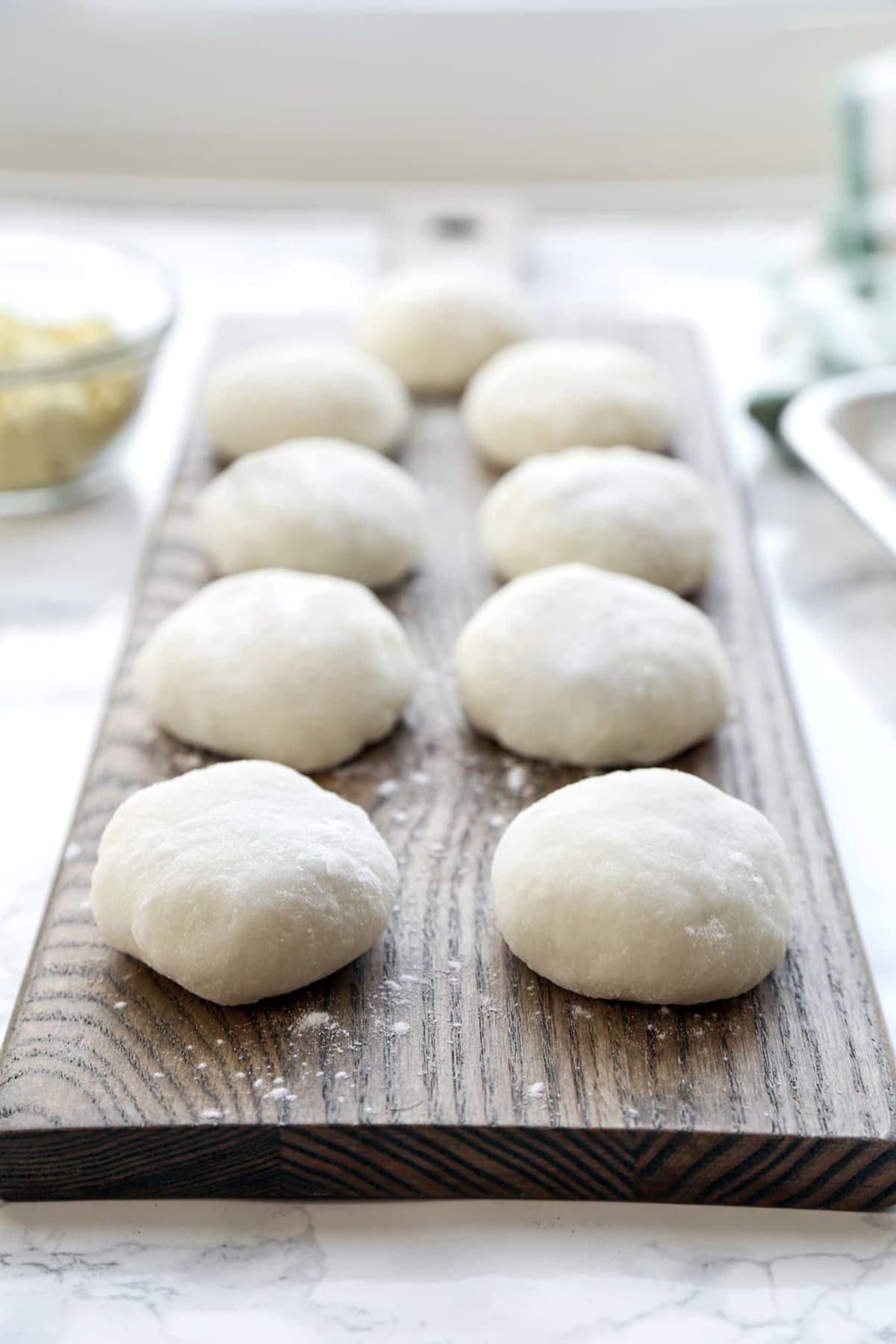
Mochi is a stickier and stretchier version of dango. They are both made from rice but the difference is that mochi is made from cooked glutinous rice while dango is made with rice flour.
Mochi can be eaten on its own, grilled the same way as yaki onigiri, or it can be filled anything from ice cream, to jelly, to fruits, to anko (which is the next and last recipe I’m sharing with you).
For this mochi recipe I am using a microwave and an immersion blender. It’s a unique way to make mochi but I find that the texture is just as sticky and stretchy, and it’s way easier to make than having to pound cooked rice in a giant mortar for hours! GET THE RECIPE
Anko (Sweet Red Bean Paste)
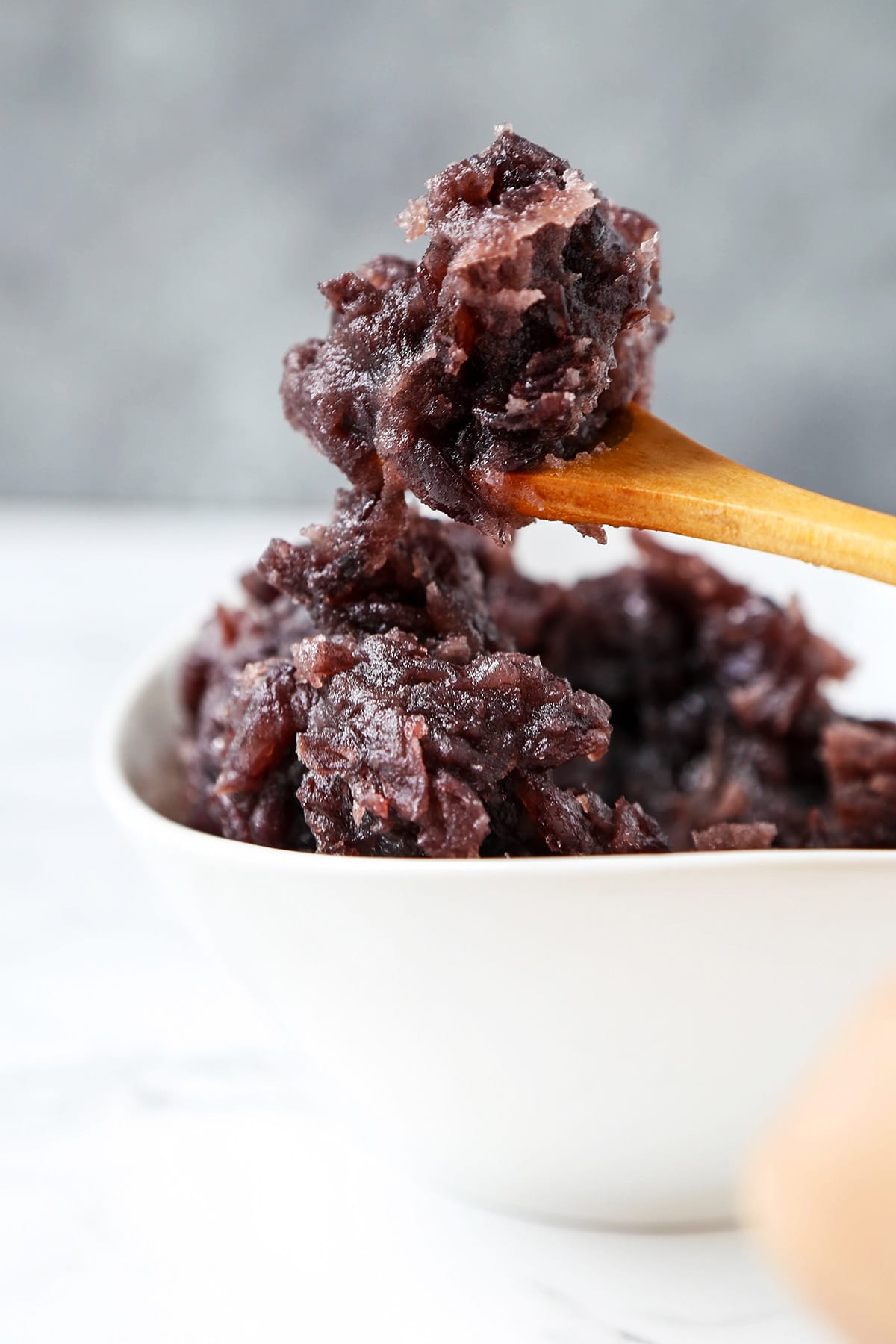
Ending this vegan Japanese roundup without mentioning anko would be a sin since it’s one of Japan’s most famous vegan sweets. Anko is a sweet red bean paste made of cooked adzuki beans that have been mashed and mixed with sugar. Anko is at the heart of traditional Japanese sweets, called wagashi, and something I grew up eating regularly.
It’s primarily used as a topping for shaved ice and ice cream, as a filling for mochi, pancakes, and breads, and sometimes in soups like zenzai. The taste is similar to a sweet potato and it has a rich, almost creamy texture. GET THE RECIPE

